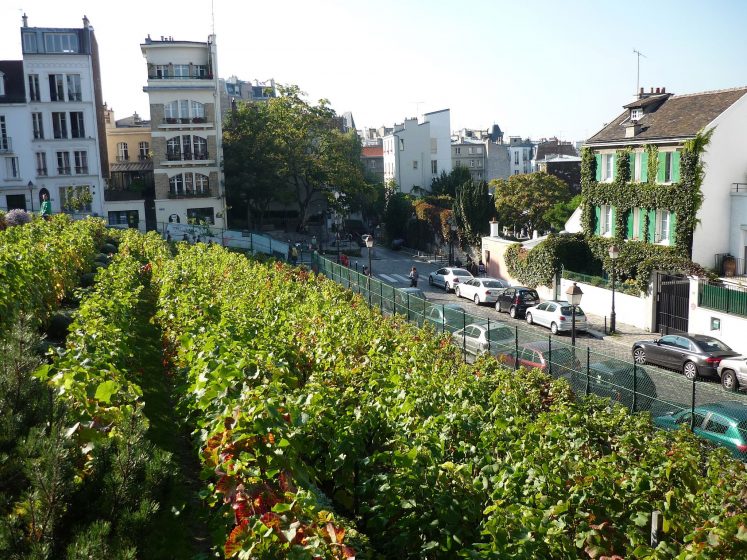Rumored Buzz on City Blooming
Rumored Buzz on City Blooming
Blog Article
The Definitive Guide for City Blooming
Table of ContentsCity Blooming for BeginnersCity Blooming - The FactsCity Blooming Fundamentals ExplainedNot known Factual Statements About City Blooming Everything about City Blooming
Intrigued in growing food offer for sale in the City of Chicago? Considering starting an area yard? Adjustments to the Chicago Zoning Regulation allow agricultural usages like community gardens and metropolitan ranches in many parts of the city. Below is a list of regularly asked concerns regarding the policies and policies that farmers need to think about when preparing a city agriculture project.
The zoning change does not change any kind of other codes dealing with composting, structure authorizations, buying or leasing City owned residential property, service licenses or ecological contamination. There are existing codes that manage these concerns and they stay completely effect and may apply to your task. Neighborhood gardens are typically possessed or handled by public entities, civic organizations or community-based organizations and preserved by volunteers.
Urban farms expand food that is planned to be offered, either on a nonprofit or for-profit basis. Due to their industrial purpose, urban ranches need a company certificate. Yes. An area garden is permitted to offer excess create that was grown on website if the sales are accessory or subservient to the yard's primary objective explained above.
See This Report about City Blooming
The quantity of garden compost product can not surpass 25 cubic yards at any type of offered time according to the requirements in 7-28-715 of the City's Municipal Code. Because the soil at most brand-new yard sites requires amending, compost, soil, wood chips, or various other products can be gotten to build or improve the growing room.

If a building permit is required after that the hoophouse will be taken into consideration an accessory building. You can find out more concerning the structure permit requirements by calling the Department of Structures. The 25,000-square-foot dimension restriction is planned to avoid a single neighborhood garden from controling a provided block or interfering with the block's existing residential or business character.
The limit does not apply to gardens found in Public Open Room (POS) districts. Can there be even more than one area yard that is 25,000 square feet on a solitary block? Yes. The dimension restriction puts on specific yards, not to individual blocks. No. Fence is not needed, however, gardens that have large parking lot may be needed to install fence or other landscaping functions.
The Greatest Guide To City Blooming
B1 & B2 areas require that all business usage activities be carried out inside. Is fencing needed for urban ranches? Fencings may be needed, along with landscaping and testing, for certain car park locations and outside work or storage areas depending on area and the certain task taking place.
Yes. Urban farms call for building authorizations and zoning authorizations before construction. Various other forms of city review may try this be required relying on particular frameworks, activities, size, landscape design, licensing, public heath and stormwater management issues. A number of these needs are recognized in the task design or permitting procedure, nevertheless, the applicant may be accountable to independently identify particular licenses or allows that may be needed.
Yes. The kind of certificate is figured out by what is occurring at the website. The Department of Organization Affairs and Customer Security can assist determine the specific kind of organization certificate that's called for. Yes. Off road parking is needed for the majority of industrial tasks in Chicago. The called for number of garage is based on the number of workers functioning on site and not the square footage of the expanding room.
The Buzz on City Blooming

An urban farm can offer garden compost material produced on website, nonetheless, the operation must comply with the guidelines in 7-28-715 of the Chicago Municipal Code. Aquaponic systems are enabled indoors on metropolitan farms in several zoning districts.
Up to five hives or colonies of honey might be kept as an accessory usage. Nevertheless, beekeepers should register with the Illinois Department of Farming. To learn more regarding the proposed zoning amendment you may contact the Division of Real Estate and Economic Development, Bureau of Preparation and Zoning at 312.744.8563.
, which takes place in country areas at the side of suburbs.
Some Known Details About City Blooming
It can involve a movement of natural growers, "foodies" and "locavores", who seek to develop social media networks based on a shared ethos of nature and neighborhood holism. These networks can create using formal institutional support, becoming integrated right into local community planning as a "shift community" movement for lasting urban advancement.
In either situation, the extra direct access to fresh vegetable, fruit, and meat products that might be know through metropolitan farming can boost food security and food security while lowering food miles, causing lower greenhouse gas discharges, therefore adding to environment adjustment mitigation. Some of the very first evidence of urban agriculture comes from Mesopotamia.
Report this page